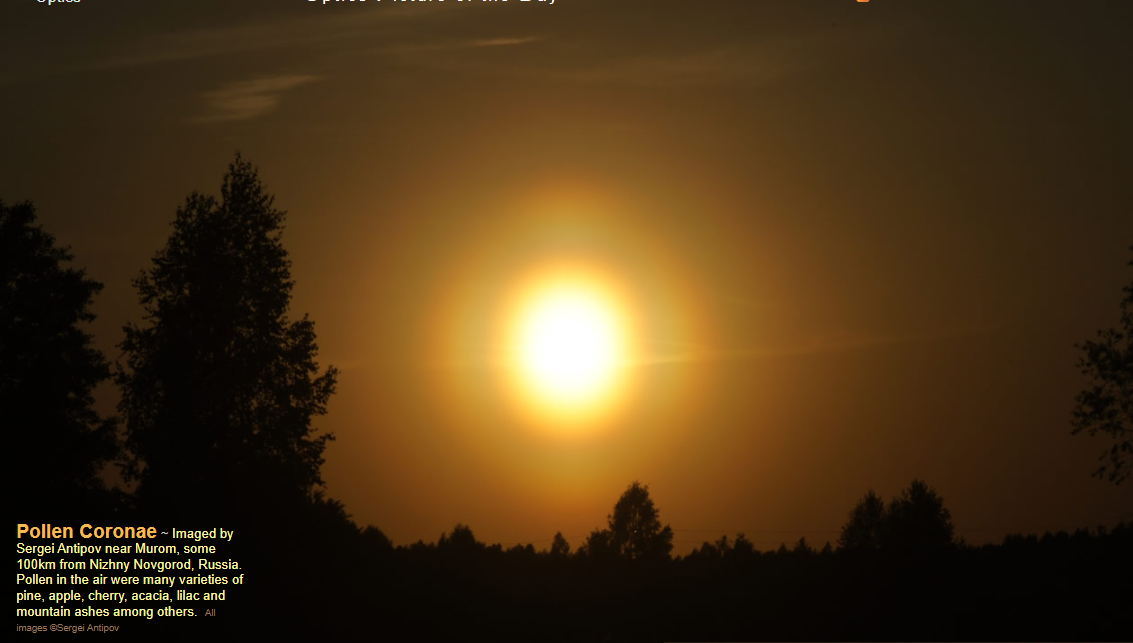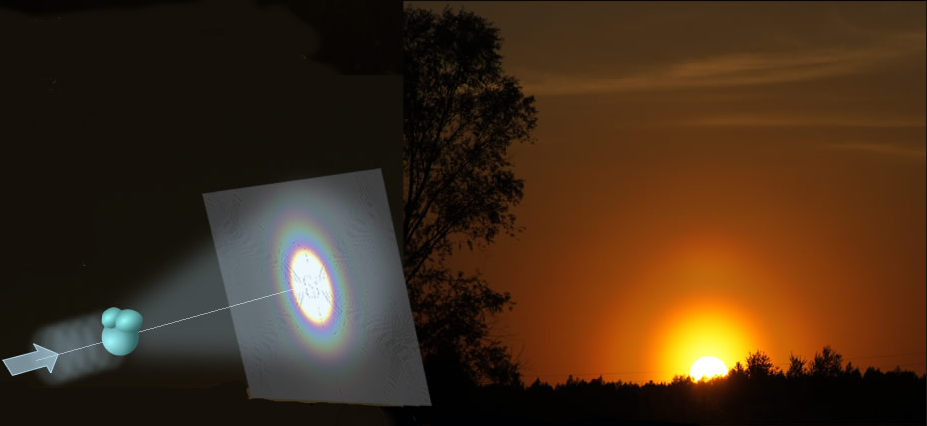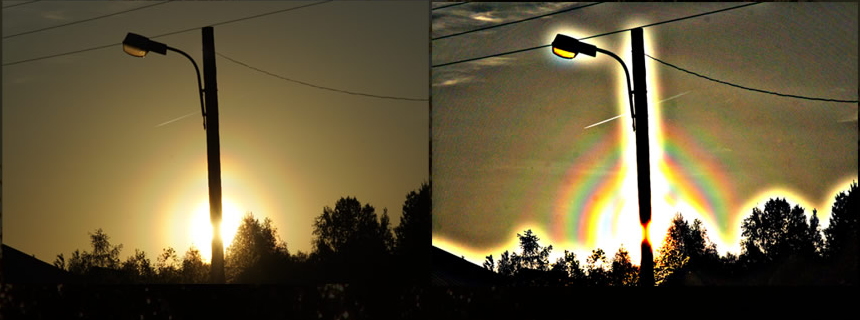Pollen Corona, Russia - OPOD
Pollen Corona, Russia - OPOD: An Enchanting Display of Atmospheric Optics
Atmospheric optics never ceases to amaze with its captivating displays of light and color. One such spectacle is the pollen corona, a phenomenon observed in the skies above Murom, Russia, as beautifully captured by Sergei Antipov. In this article, we delve into the intricacies of pollen coronae, shedding light on their formation, characteristics, and the botanical elements that contribute to their ethereal appearance.
Pollen coronae are distinctively small and vertically elongated rings that grace the sky. These mesmerizing patterns are created by the diffraction of sunlight or moonlight by pollen grains suspended in the air. Each pollen grain acts as a tiny prism, bending and scattering light to produce the stunning display above. It is worth noting that when a particular type of pollen is abundant, the corona can feature multiple rings due to the uniform size of the grains.
The presence of air sacs within pollen grains, such as those found in pine trees, plays a crucial role in shaping the morphology of pollen coronae. These air sacs aid in the dispersal of pollen by wind. As the grains align themselves with the assistance of these sacs, they give rise to oval-shaped coronae and bright spots within them. This alignment causes the horizontally elongated pollen grains to produce vertically elongated coronae, adding to the enchantment of the spectacle.
When observing Sergei Antipov's photographs, it becomes apparent that the coronal pattern extends extensively across the sky. The enhanced version reveals the intricate details and complexity of the phenomenon, showcasing its true magnificence. The interplay between light and pollen grains creates an ever-changing tapestry of colors and shapes, leaving spectators in awe of nature's artistry.
The diversity of pollen types present in the atmosphere further contributes to the splendor of pollen coronae. In the vicinity of Murom, a variety of pollen from pine, apple, cherry, acacia, lilac, mountain ashes, and other flowering plants fill the air. Each pollen type brings its unique characteristics to the corona, resulting in a mesmerizing blend of colors and patterns. The intricate dance of light and pollen grains creates an ephemeral masterpiece that leaves onlookers spellbound.
To fully appreciate the beauty of pollen coronae, it is essential to understand the underlying science behind their formation. The diffraction of light by pollen grains follows well-established principles of optics. As light passes through the grains, it undergoes diffraction, bending and spreading out to create the rings and bright spots observed in the corona. This phenomenon is similar to the formation of other atmospheric optical phenomena, such as halos and rainbows, where the interaction between light and particles leads to breathtaking displays.
In conclusion, the pollen corona observed near Murom, Russia, is a remarkable example of atmospheric optics at its finest. The interplay between sunlight or moonlight and pollen grains suspended in the air gives rise to enchanting rings and bright spots that adorn the sky. The presence of air sacs within pollen grains contributes to the elongated shape of the coronae, adding to their allure. With a diverse array of pollen types in the atmosphere, each corona becomes a unique masterpiece of nature's artistic expression. So, next time you find yourself gazing at the sky, keep an eye out for this enchanting display of atmospheric optics.

Pollen Coronae ~ Imaged by Sergei Antipov near Murom, some 100km from Nizhny Novgorod, Russia. Pollen in the air were many varieties of pine, apple, cherry, acacia, lilac and mountain ashes among others. All images ©Sergei Antipov

Pollen coronae are characteristically small and vertically elongated. Sometimes they have brighter areas or spots on the rings. Pollen grains diffract sun or moonlight to produce the pattern in the sky. When one particular pollen type is abundant then there can be many rings as all the grains are of the same size.

Often pollen grains, for example pine, have air sacs to assist wind dispersal. The sacs align the grains and this gives rise to the oval coronae and bright spots. A horizontally elongated object gives a vertically elongated corona.

The coronal pattern is extensive as Sergei's strongly enhanced version shows at right.
Note: this article has been automatically converted from the old site and may not appear as intended. You can find the original article here.
Reference Atmospheric Optics
If you use any of the definitions, information, or data presented on Atmospheric Optics, please copy the link or reference below to properly credit us as the reference source. Thank you!
-
<a href="https://atoptics.co.uk/blog/pollen-corona-russia-opod/">Pollen Corona, Russia - OPOD</a>
-
"Pollen Corona, Russia - OPOD". Atmospheric Optics. Accessed on November 26, 2024. https://atoptics.co.uk/blog/pollen-corona-russia-opod/.
-
"Pollen Corona, Russia - OPOD". Atmospheric Optics, https://atoptics.co.uk/blog/pollen-corona-russia-opod/. Accessed 26 November, 2024
-
Pollen Corona, Russia - OPOD. Atmospheric Optics. Retrieved from https://atoptics.co.uk/blog/pollen-corona-russia-opod/.